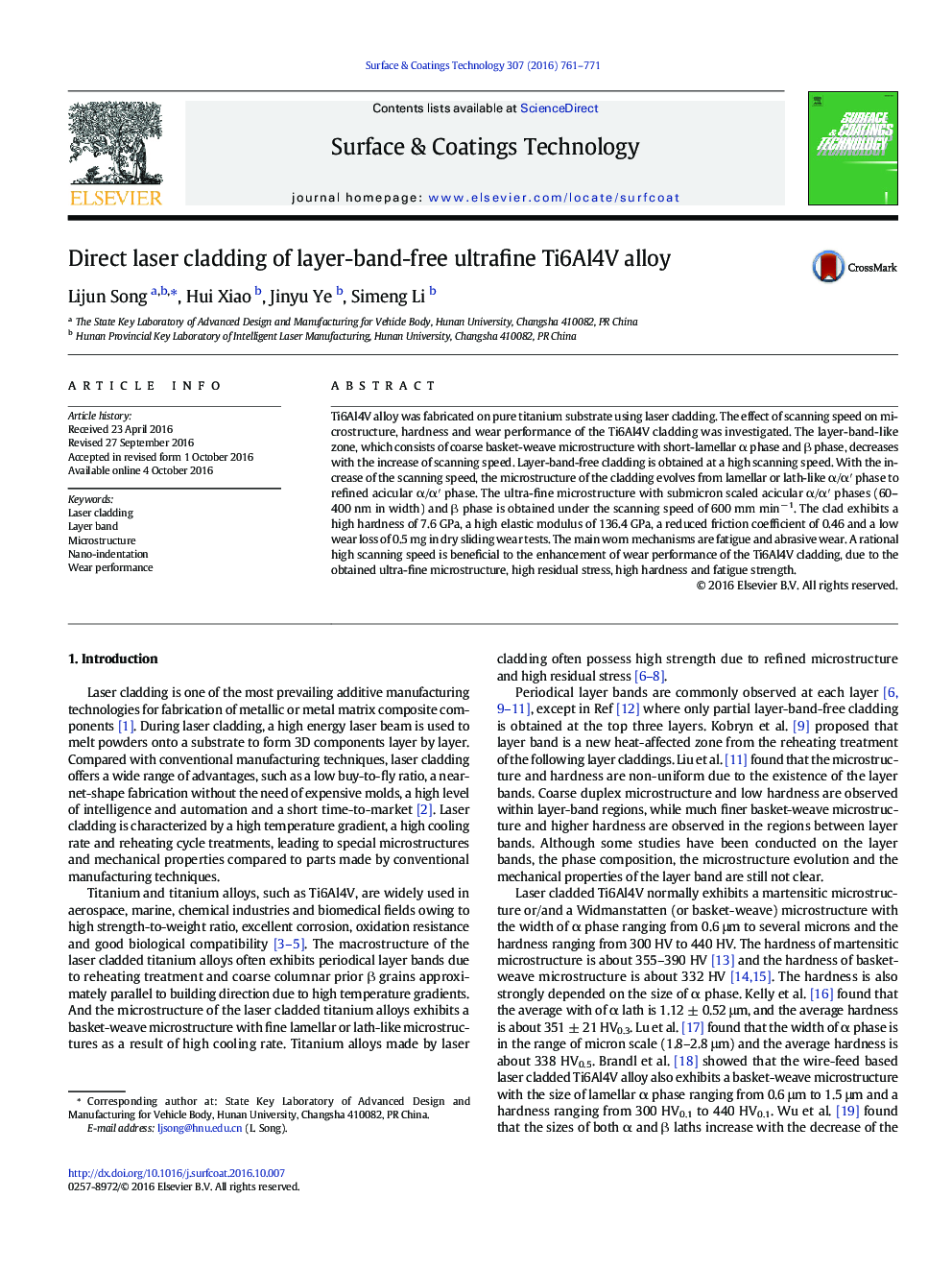| کد مقاله | کد نشریه | سال انتشار | مقاله انگلیسی | نسخه تمام متن |
|---|---|---|---|---|
| 6481493 | 1398876 | 2016 | 11 صفحه PDF | دانلود رایگان |

- Submicron scaled acicular α/αⲠphases (60-400 nm in width) embedded in β phase matrix is obtained.
- A layer-band-free cladding is obtained through the whole sample.
- A high hardness of 7.6 GPa, a high elastic modulus of 136.4 GPa, and a low wear loss of 0.5 mg in dry sliding wear tests are obtained.
Ti6Al4V alloy was fabricated on pure titanium substrate using laser cladding. The effect of scanning speed on microstructure, hardness and wear performance of the Ti6Al4V cladding was investigated. The layer-band-like zone, which consists of coarse basket-weave microstructure with short-lamellar α phase and β phase, decreases with the increase of scanning speed. Layer-band-free cladding is obtained at a high scanning speed. With the increase of the scanning speed, the microstructure of the cladding evolves from lamellar or lath-like α/αⲠphase to refined acicular α/αⲠphase. The ultra-fine microstructure with submicron scaled acicular α/αⲠphases (60-400 nm in width) and β phase is obtained under the scanning speed of 600 mm minâ 1. The clad exhibits a high hardness of 7.6 GPa, a high elastic modulus of 136.4 GPa, a reduced friction coefficient of 0.46 and a low wear loss of 0.5 mg in dry sliding wear tests. The main worn mechanisms are fatigue and abrasive wear. A rational high scanning speed is beneficial to the enhancement of wear performance of the Ti6Al4V cladding, due to the obtained ultra-fine microstructure, high residual stress, high hardness and fatigue strength.
Journal: Surface and Coatings Technology - Volume 307, Part A, 15 December 2016, Pages 761-771